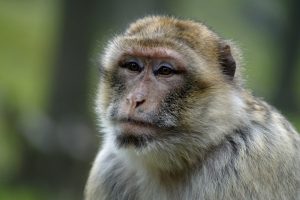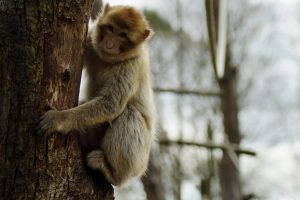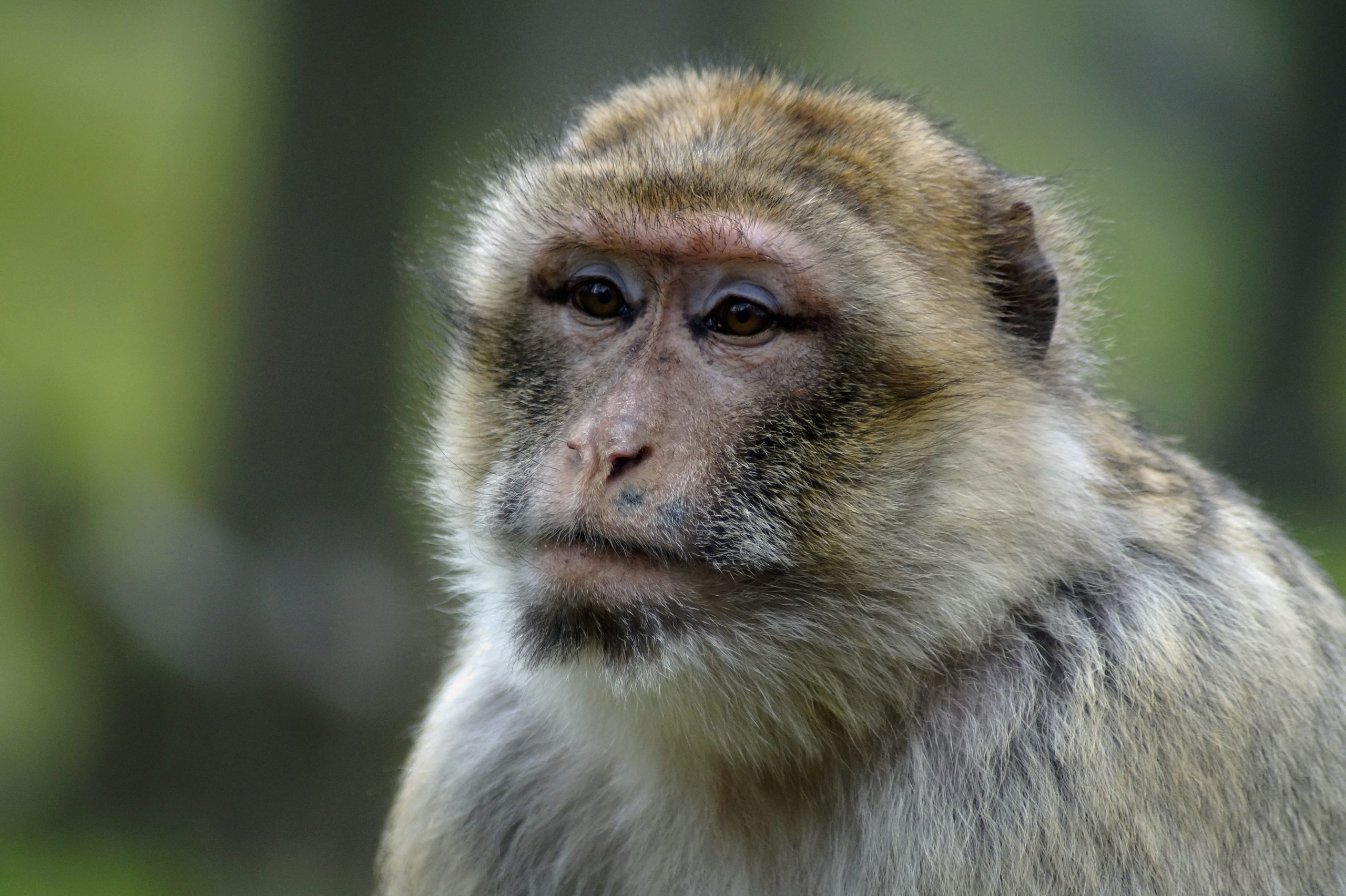When people think about primates most people remember lively apes playing and toying around. Yet primates are a complex generic group, starting with the 30 grams light tarsier up to the 200 kg heavy gorilla. Naturally our next relatives, the great apes, fascinate us. With the image of these lively animals in mind you can easily forget how serious their situation is in the nature. This is a core reason why we opted on this topic for the first edition of Charity-Kalender.
In total there are 496 primates species, of which more than half of them are endangered in the meantime. Alone on the island of Madagascar 101 there are species and nearly 90% of those are in a critical state. Among Asia’s 119 species there are worries regarding about two thirds of the kinds. Origin of the primates merely are in Middle and South America (new-world monkeys), in Africa and Asia (old-world monkeys).
Tourists who have been to Southern Europe may protest now and say that they have seen primates in Gibraltar. This is absolutely correct. These are Barbary macaques or also called magots, which with a high probability were imported from Northern Africa. The 230 animals who live there today can be tracked back to Winston Churchill. A legend says that Gibraltar remains under British governing as long as magots live there, so Churchill imported Barbary macaques from their origin Morocco and Algeria to liven up the population that declined to only a few animals. Even though they are no real European monkeys they have a geographical specialy as they are Africa’s only primates living north of Sahara. A further unique feature: they are the only macaques, which are not home in Asia.
You might think that a monkey, which is tough enough to survive in Europe and even is a bit annoying as in Gibraltar cannot have worries, but the opposite is the case: Barbary macaques are engangered, the population decreased by more than fifty percent within the last thirty years. About 6.000 to 8.000 animals live worldwide, yet at least two thirds in Morocoo. There are two main problems for the population: one is that annually 200-300 babies are caught and illegally sold as pets. The other is the aggricultural growth, which results in lesser connected areas and separates the singular groups.
In Zoos Barabary macaques are widely spread though and form a solid reserve pool. Nice walk through enclosures can be found at NaturZoo Rheine and at Apenheul Apeldoorn. Furthermore magots are on exhibit at Arche Noah Zoo Braunschweig, Opel Zoo Kronberg, Tiergarten Nuremberg or Zoo Barcelona.
In the course of this primates campaign we will inform about further specialties of various primate species.

Berberaffe – Barbary macaque – Macaca sylvanus – NaturZoo Rheine

Berberaffe – Barbary macaque – Macaca sylvanus – Apenheul Apeldoorn
